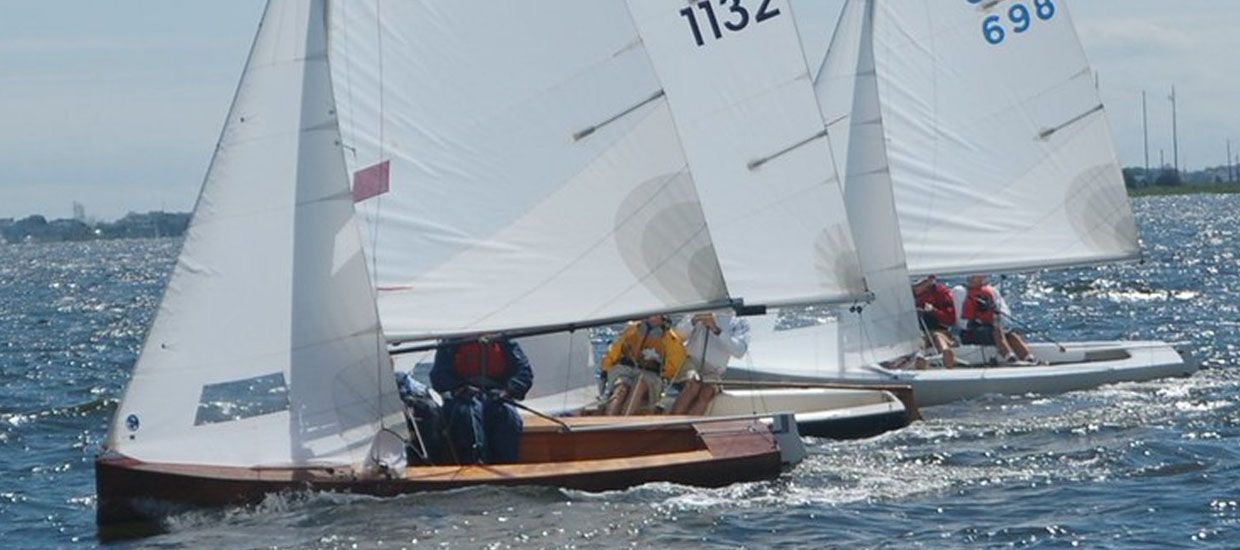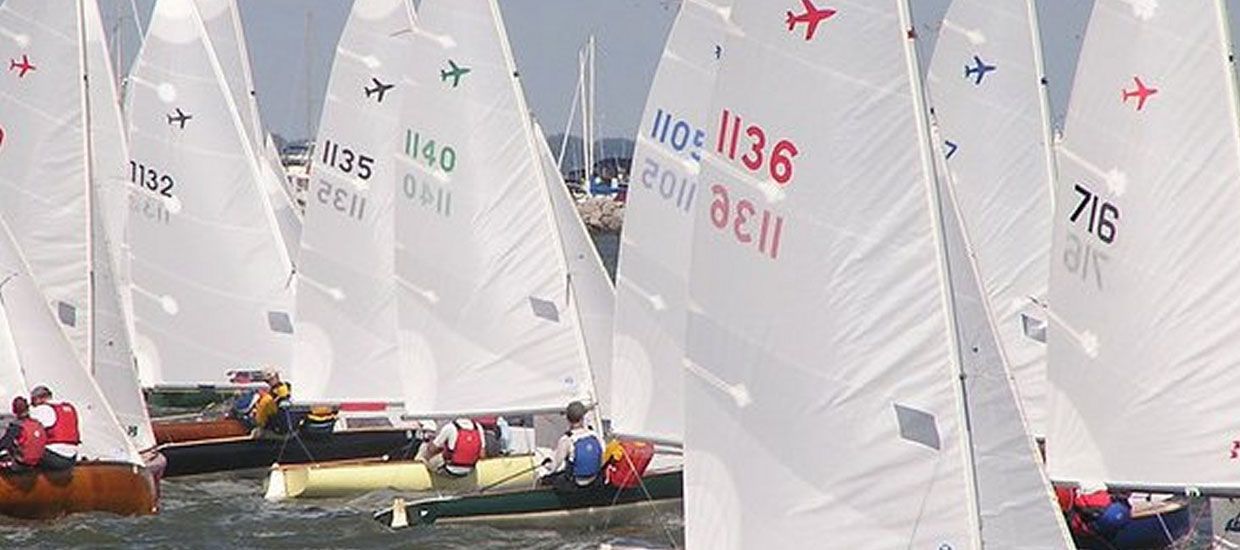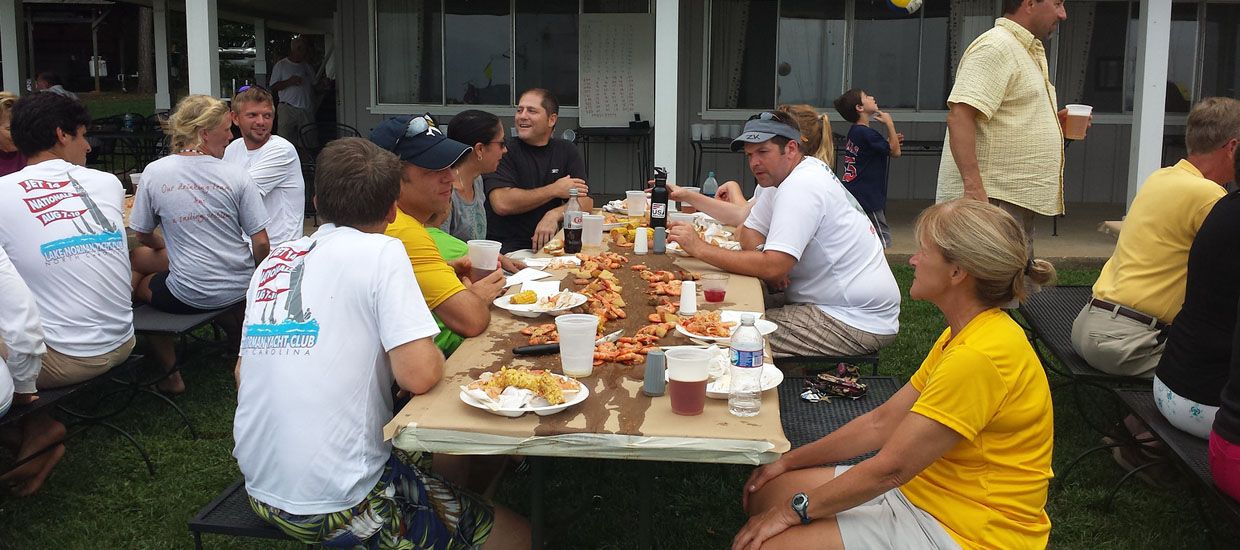Capsize Recovery (S. Michos 2006)
SAFETY AND THE JET 14
When sailing the Jet 14 or any other boat, SAFETY should be one of the first considerations of the skipper and crew. The Jet 14 is a centerboard boat which means that it can “tip over” or capsize and measures must be taken to return the boat to the upright position.
SAFETY EQUIPMENT
- Buy a good fitting Coast Guard Approved PFD specific to your body weight. Make sure the PFD is one you will like and wear. All sailors are strongly encouraged to wear PFDs. Not having to immediately start swimming will keep an unexpected, stressful situation more manageable. Remember, dinghies don’t only capsize by “operator error.” A mechanical failure, such as the hiking strap breaking, could put a sailor in the water.
- Dress for the conditions. You lose 40% of your body heat from your head. Wear non-bulky clothing that dries fast. Gloves and boots are help keep hands and feet from getting too wet or cold. Hypothermia can occur even on warm days, with your body, losing heat 25 times faster in water, than air. Keep hydrated by drinking plenty of fluids.
- A paddle, bailing device and 30 feet of tow line are safety musts for the Jet 14 (these items are required by the Class Association). I loosely tie my bailing bucket into the spinnaker bag. A roll of good water resistant duck tape can always come in handy for quick repairs.
CAPSIZING THE JET 14
In the event of a capsize, DO NOT PANIC!!!! First, make sure your lifejacket is secure and stay with the boat. STOP AND THINK OF WHAT YOU NEED TO DO. The best thing about a dinghy is that it does not go too far away from you in the capsize, as compared to falling off a keelboat that sails away. Sometimes you capsize fast, other times it can happen slowly.
The next most important item is to get to the centerboard. NEVER sail with the centerboard all the way up into the trunk. If you are sailing downwind and the boat starts to rock and roll, put more centerboard down to stabilize the boat. When capsizing, you will need to grab the board to right the boat. If you go over with the bailers open, SHUT THE BAILERS, either before righting or immediately after. At the beginning of the season, check to see that the top of the mast is closed off prior to rigging your boat. A mast that fills with water will work against your righting efforts. If you capsize with the spinnaker up, someone may have to swim about the boat to release the halyard and collect the sail so it does not act as a water anchor.
ALWAYS TURN THE BOAT INTO THE WIND BEFORE RIGHTING THE BOAT AND MAKE SURE YOUR SAILS and CONTROL LINES ARE UNCLEATED! If you try to right the boat downwind or sideways it can go right back over or start to sail away. As the boat begins to right, one crew can crawl in over the side or back. There is also a scoop method which is explained on the US SAILING Small Boat Course website.
STUFF THE CENERBOARD SLOT. The next important thing to do is to stop water from coming back through the centerboard slot. Carry 1” soft caulk tubing or if needed, stuff a shirt or sponge into the centerboard slot. Then begin bailing the boat.
The submerged Jet 14 will be fairly low to the water and sometimes it is best to have only ONE crew inside bailing the boat and the other outside the boat, until some of the water is out. Sometimes a boat may need to be recapsized to get the excess water out.
As the boat becomes less water logged you begin reaching with the bailers open to dry out the boat. Sometimes a tow is necessary.
Towing Assistnace With A Capsized Jet 14: Remember, most importantly, this is your boat so you should take responsibility to assist in its recovery. Again do not try to right the boat unless it is head to wind. This first step will save a lot of time and money spent repairing broken equipment.
The Turtled Jet 14: This recovery can be a little more challenging, especially if your mast gets stuck in the mud. The boat will need to be slowly eased out of the murk with a tow. Again take your time and position the boat correctly prior to righting.
FALLING OUT OR CAPSIZING AT THE DOCK
Wear your PFD! I’must say I have seen more people accidentally fall out of the Jet than actually capsize the boat. Always approach your Jet from the side at the dock. The Jet is similar to a canoe at the dock and is tippy. Do not step on the deck or hold onto the shrouds to stabilize yourself when getting in. Go quickly to the middle of the boat and put some centerboard down.
The most important idea that I can not stress enough is Do Not Panic and use common sense when sailing and righting the boat. Before leaving the dock to sail beware of the conditions and sail your boat to your comfort level.
Sue Michos


